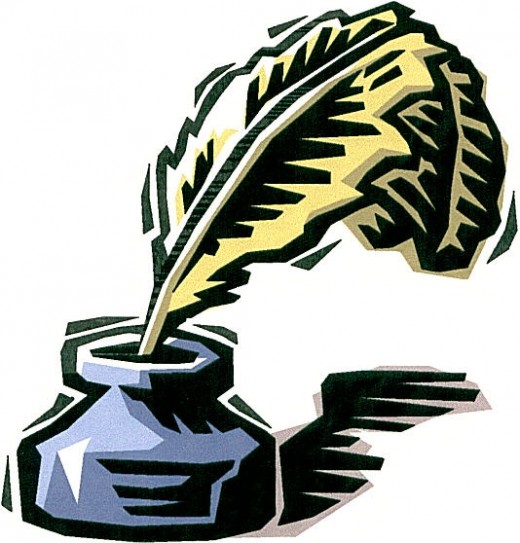Poetry Submission
For some poets, part of the allure of writing poetry is being seen, getting noticed, and distributing their poetry to the world. Getting your poetry published requires planning, organization, and a bit of patience.
Thousands of poems are submitted to publishers on a yearly basis. This puts an undue pressure on the publisher's end to choose works which fall in line with items they already publish. This also means that you, the poet, have a little bit of competition out there, but that's okay.
Here you'll learn how to set up a submission packet, the correspondence you will send to publishers that will allow them to view your work in a professional manner. Being published as an author of any kind of written work is a serious matter, and should be treated as such.
In the spirit of tradition, remember that while you have the ability to send poems to a publisher for consideration via email, it is more professional to do so by postal service. Email bounces, is passed over, and may not receive the serious consideration that your work of art deserves.

First, let's start by looking at your poem. If your poem is scribbled on a series of napkins from the restaurant you were at last night, you really don't want to send that in to a publisher. While they may appreciate the ambiance of receiving the poem in it's original form, taking you seriously as an artist stops at that ring left by your soda glass. You totally should have had the tea!
Seriously, though, your poem should be typed out and printed. Center the poem, and double space it. This will make use of the white space on the page and bring attention to the words there, while leaving the poem easy to read. Make sure you use a font type and size which is easily read, my suggestion is the Times New Roman font set at size 12. This font comes standard with most computers and is very crisp.
If your poem spans more than one page, be sure you insert a header or footer. The header/footer should look like this:
Last name, Name of Poem, Page #
This ensures that your poem, if separated from the rest of your submission packet for any reason, will be able to be connected to you.
Alright, so the easy part is done. Now, you want to write up a cover letter. Keep your cover letter brief, detailing your previous publishing history, if any. The focus of the publisher's attention should be on your poem(s), not on the cover letter or other things.
You're nearly ready to submit your work to a publisher, now. Other considerations you should make in compiling a submission packet:
- a self addressed stamped envelope - include this with every single submission. A majority of the publishers who will consider poetry require this item to be included with submissions. This gives the publisher the impression that you truly are serious about your work, and means that the publisher does not have to dip into their own operating costs to send the poetry back to you in the case of rejection. If they accept your work, this gives them a way to notify you as soon as they're ready.
- Are your poetry and cover letter proofread? - your poetry should be free of unintentional spelling and grammar errors. Before sending your packet, proofread your work one last time, then let a friend look over it. Once you and your friend are sure the poetry is free of errors, then you can add it to your packet.
- Be prepared for the big N-O. Your poetry may be a breakthrough of prose, it may be amazing, but remember that if you are published, it is based on numerous factors which the publisher is best prepared to decide. You will experience rejection, but this does not diminish the worth and awesomeness of your prose. Keep submitting, and one day you will be published.
Top Three Poetry Cover Letter Tips
Editor's Name: When submitting to specific publications, always find the editor's name, and address your cover letter to them. You can generally find this on the magazine/journal/publication's website, or in any submission guidelines they may distribute.
Describe Your Work: Including information like the word count, title, genre, and a brief description of your work will give the editor some insight when they are looking through many submissions to potentially read and process for their publication.
Be concise: While you may be tempted to both present your work and the pertinent information the editor will consider about it and also appeal to the editor by showing you've done your research, keep your cover letter to the point. Be friendly and personable, including everything they'll need to know before reading your piece, and then end the letter. Once the editor has read your piece and contacted you, you will have more opportunity to have discussions with them. Make your cover letter a memorable greeting, rather than a dissertation.











